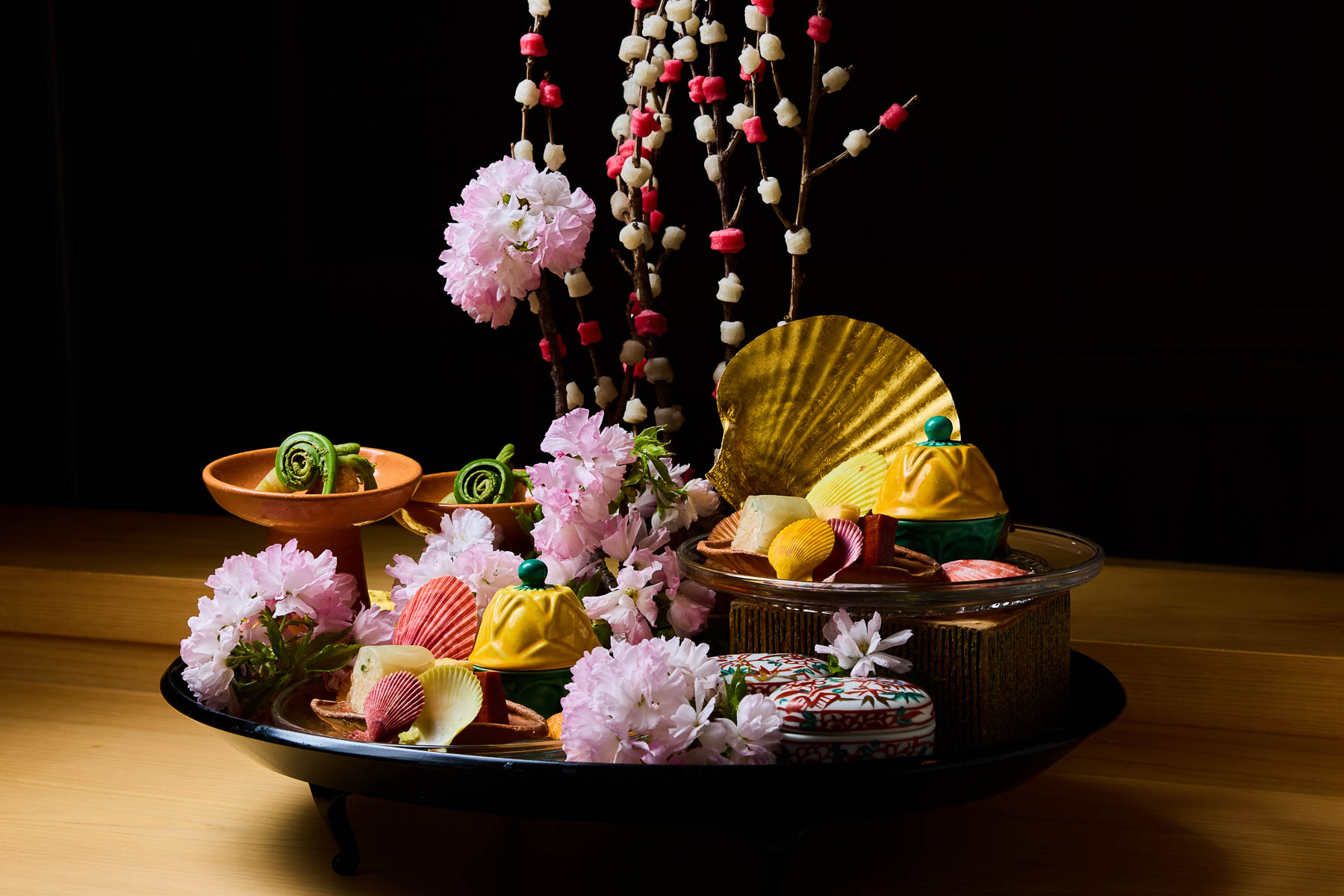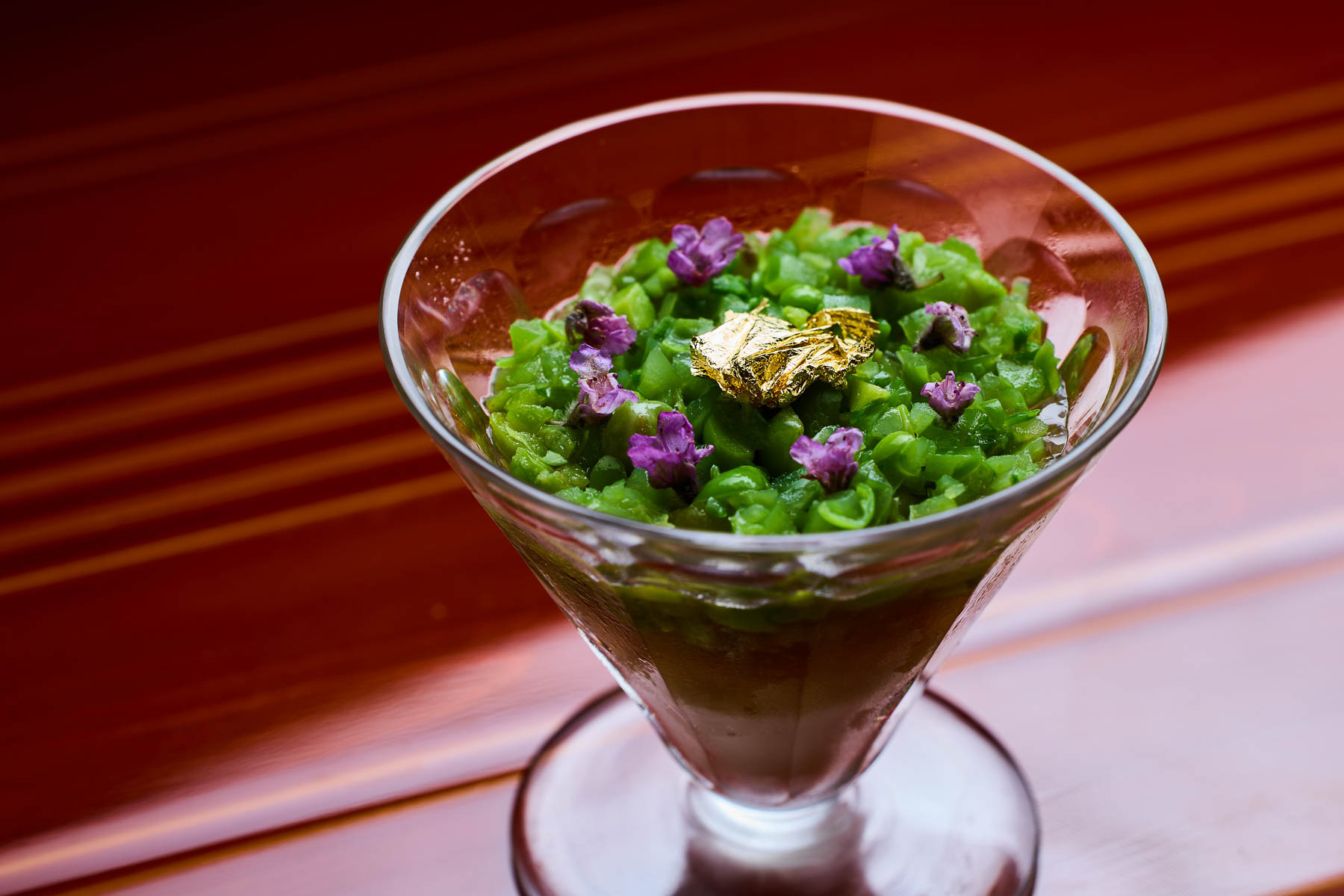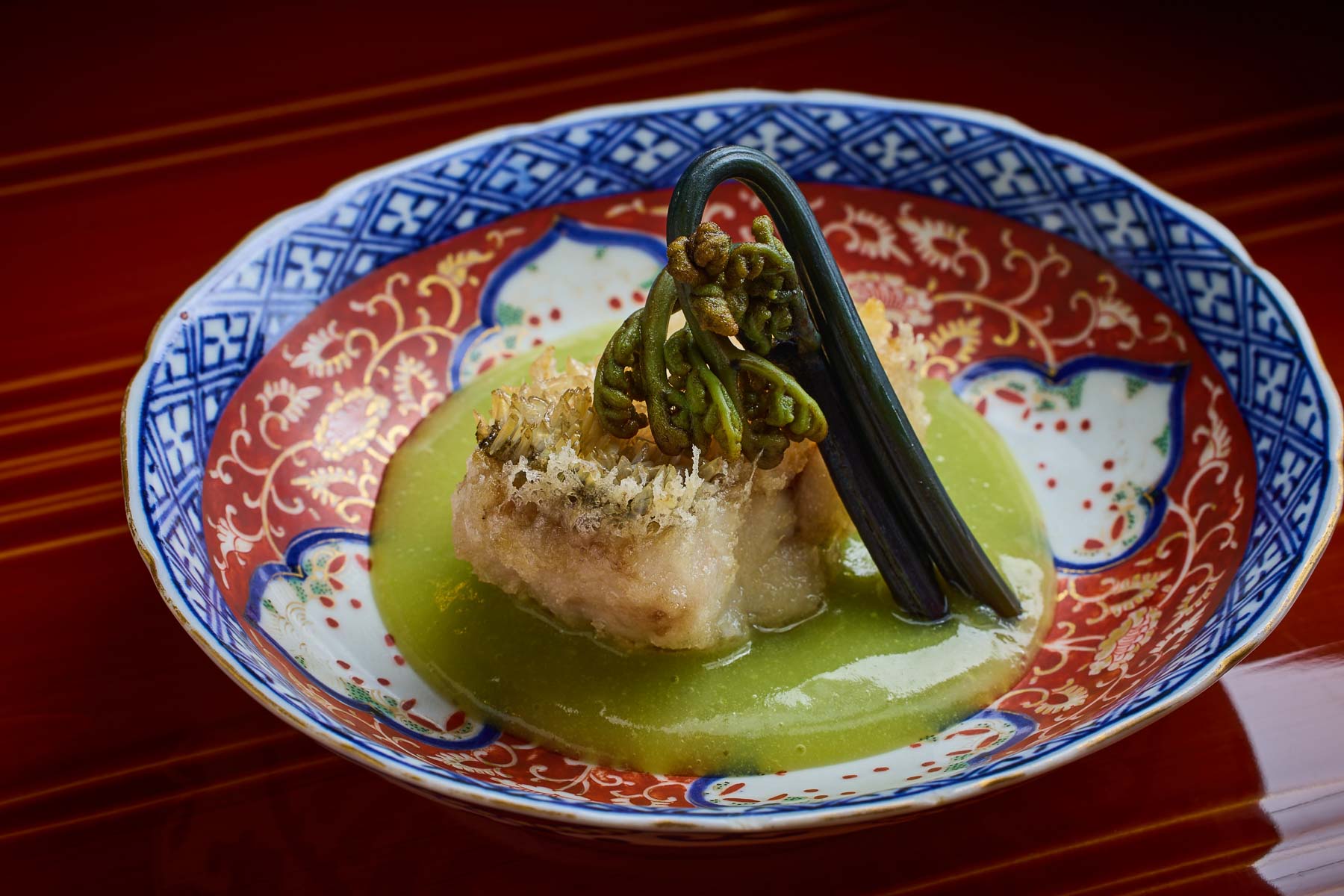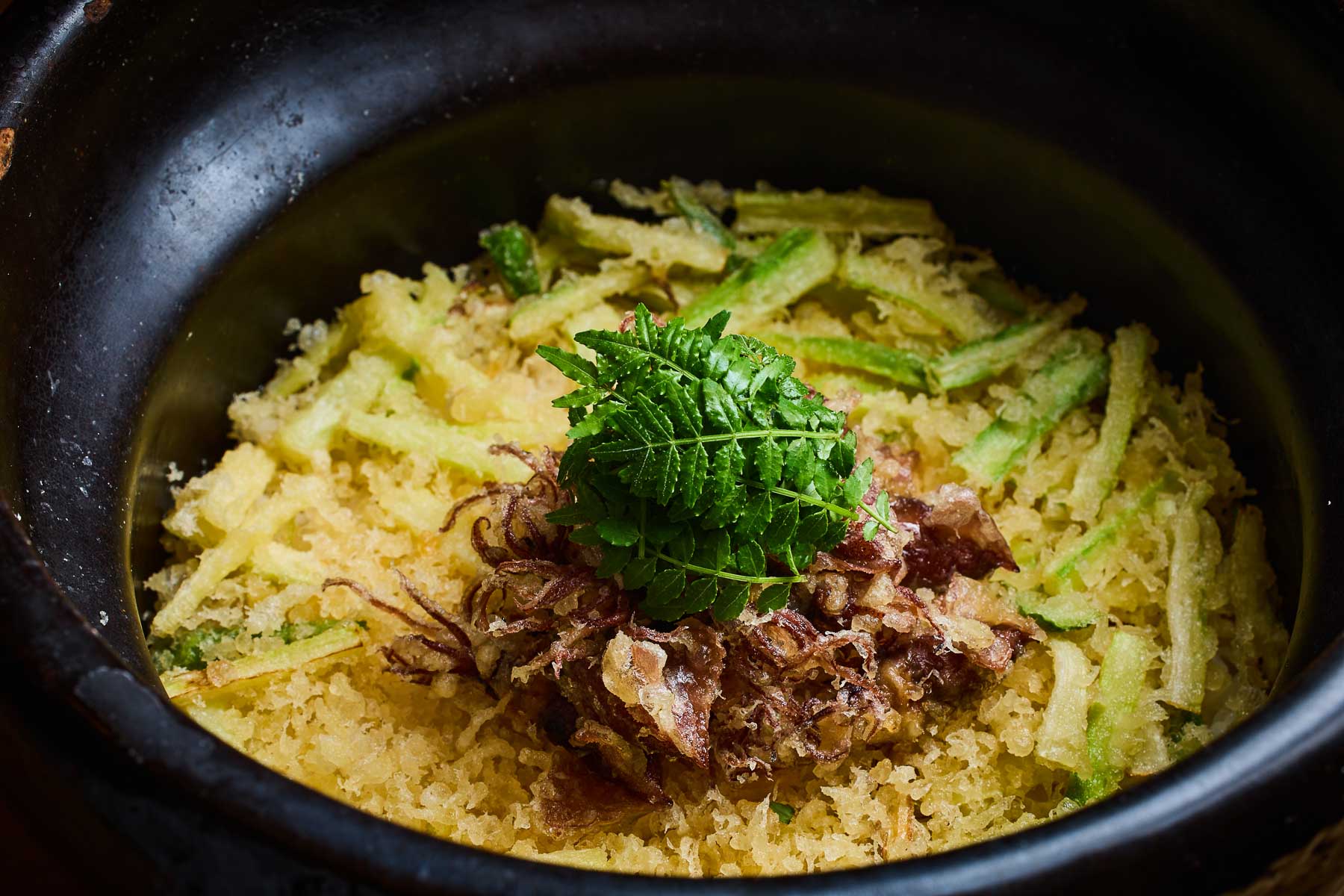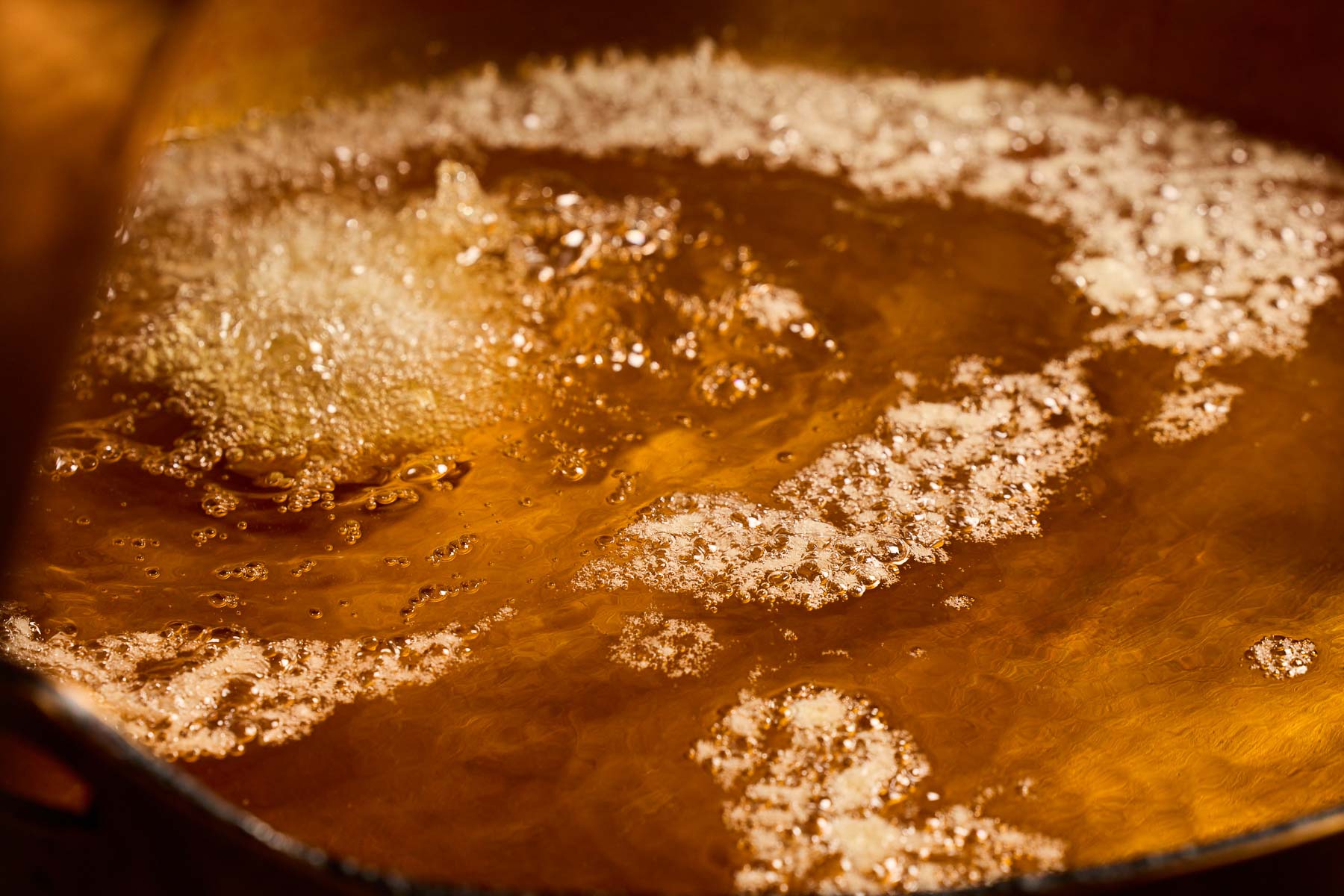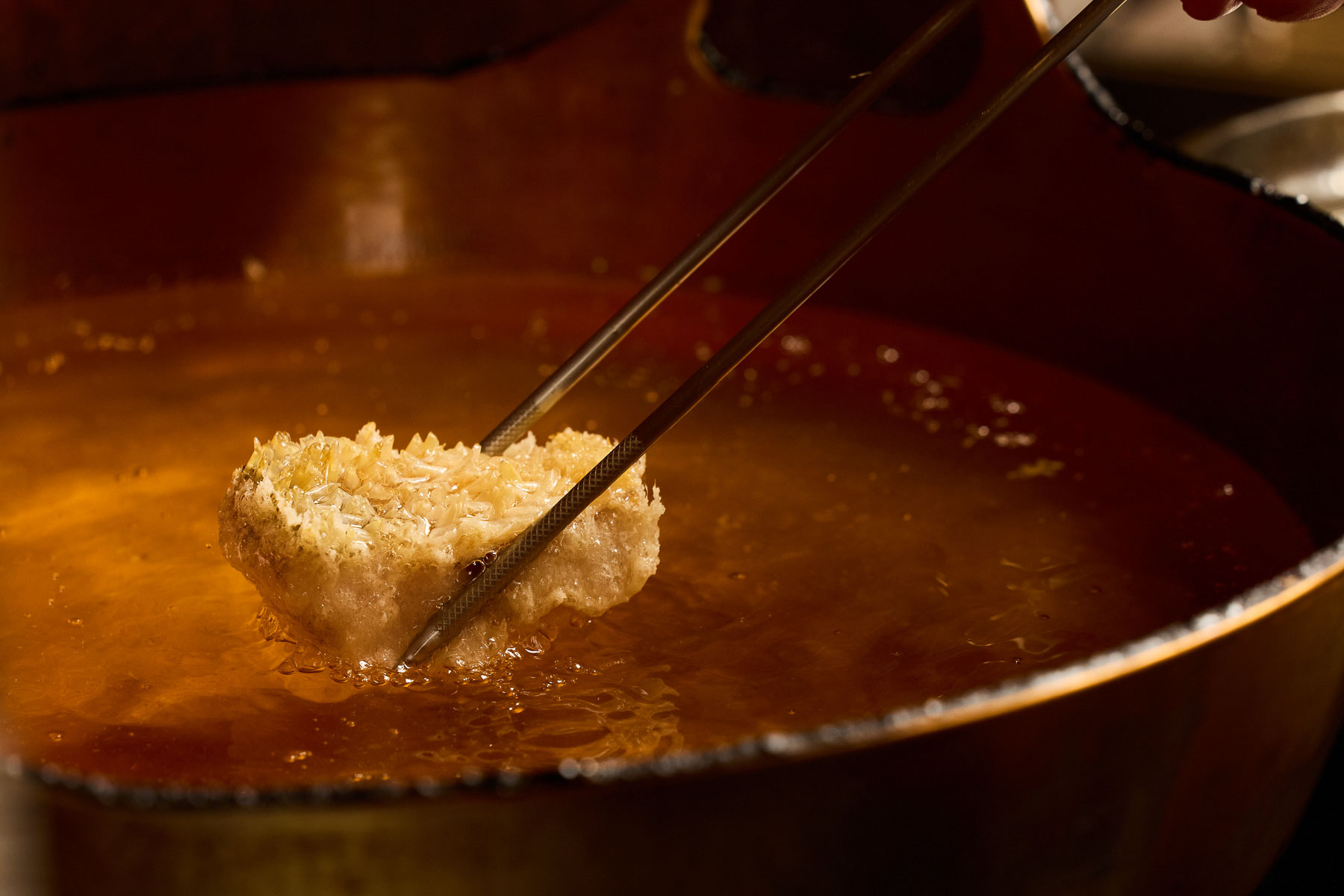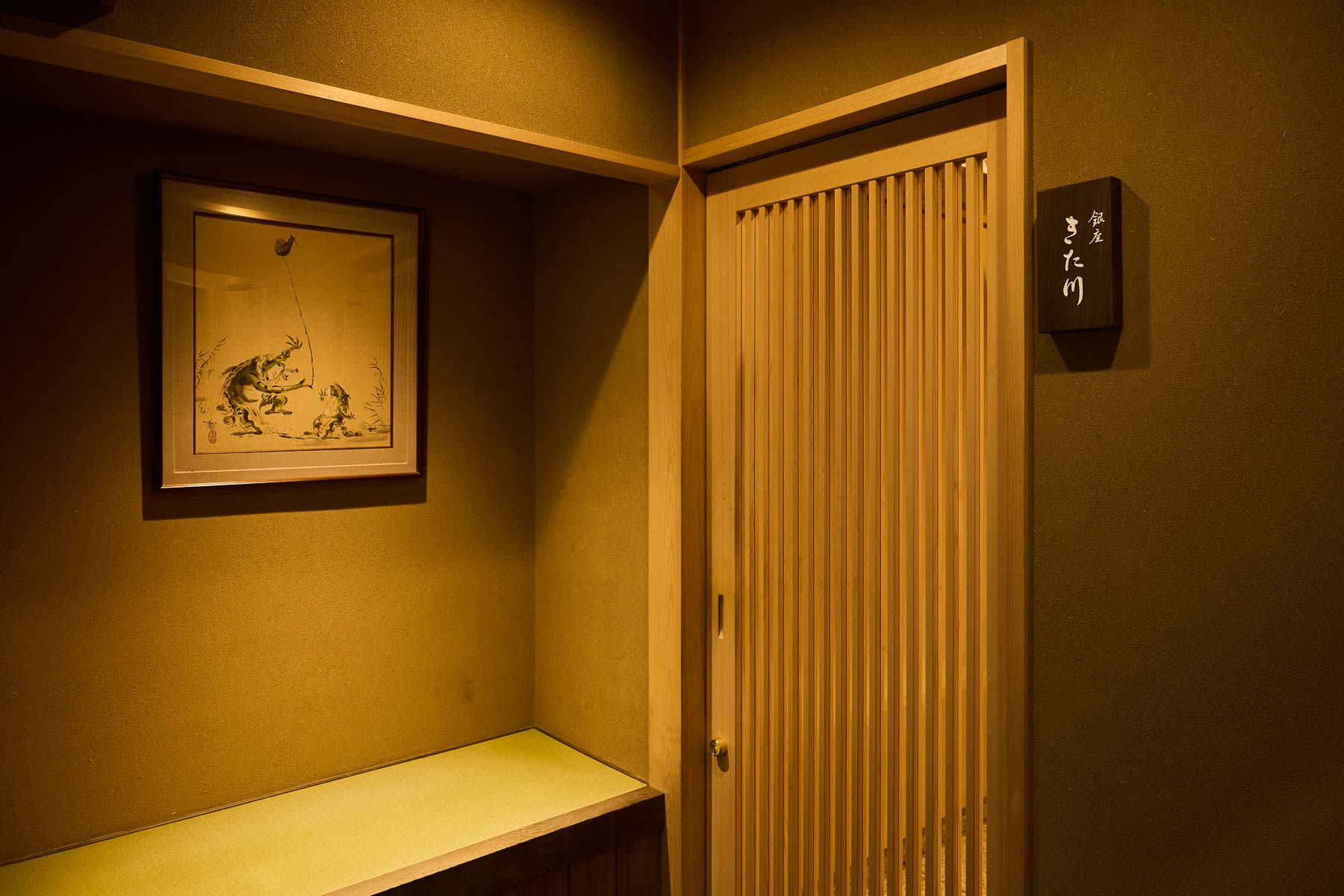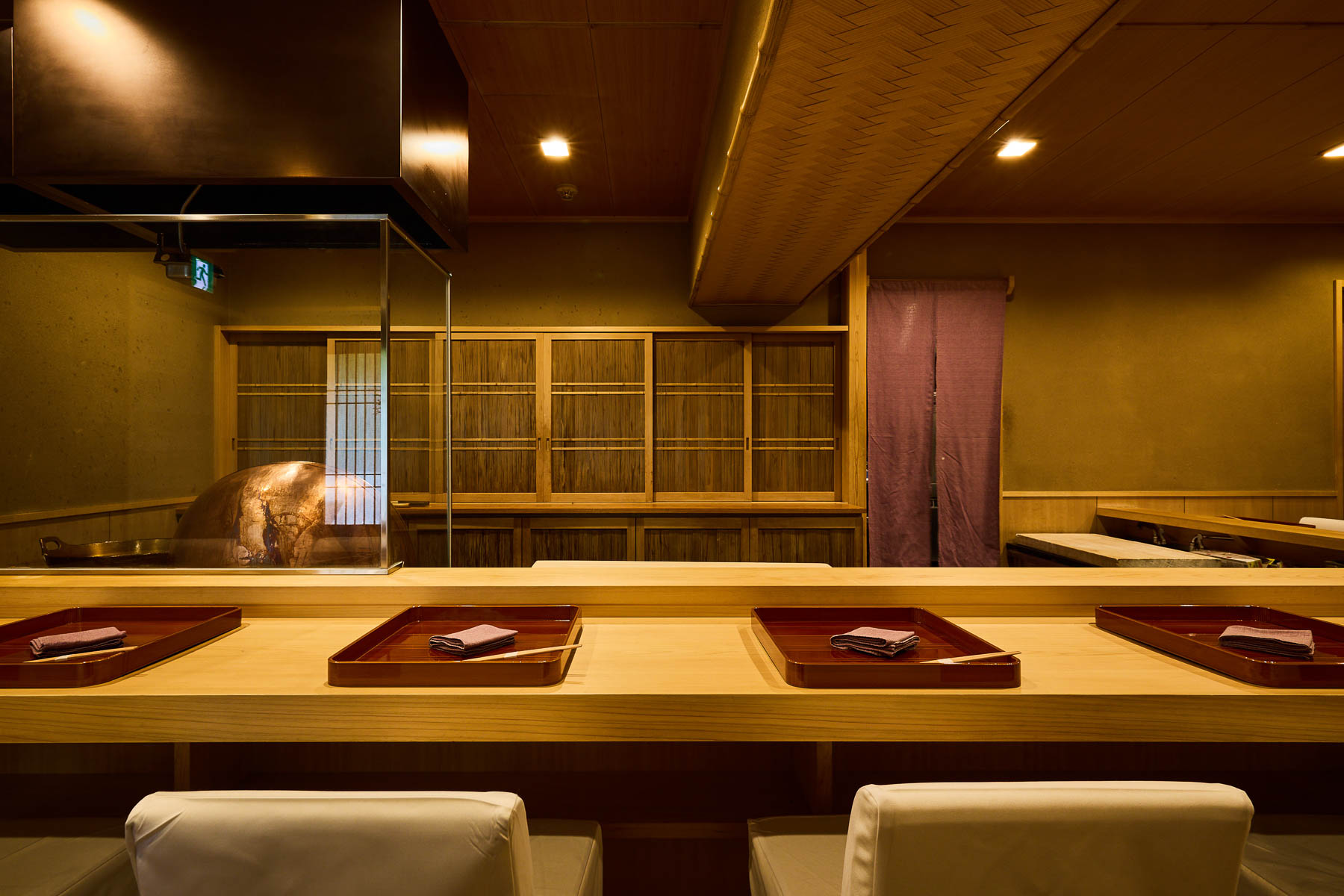
Tokyo
Ginza Kitagawa
銀座 きた川
Founded as an extension of award-winning Ginza Shinohara, Ginza Kitagawa is a place where young talents refine with their craft. Under the guidance of Chef Kazuyuki Kitagawa, the team here explores a new approach to kappo cuisine, where traditions meet fresh ideas. Their signature oil-based dishes use techniques rarely seen in kaiseki. The menu unfolds in real time before guests, each dish a celebration of seasons and enjoyment.
Since opening in September 2022, Ginza Kitagawa has quietly earned its place in Ginza’s elite culinary circle, located just steps from its parent restaurant. The restaurant’s sign, rendered by founder Takemasa Shinohara’s calligraphy teacher, hints at its connection to tradition, while the striking floral arrangements, composed by Kitagawa himself, offer a glimpse into his personal aesthetic.
The dining area centers around a white cypress counter, seating just ten guests. Behind it is the frying station where the chefs prepare their signature oil-based courses such as deep-fried tilefish and kakiage rice. Beverage pairings are also curated with intention. Wine and sake are chosen for their affinity with the cuisine, with a particular emphasis on freshness and fragrance.
CUISINE
Traditions meet fresh ideas
The seasonal kappo menu draws from the disciplined techniques of Ginza Shinohara while weaving in elements from tempura, sushi, and even French cuisine—skills Kitagawa developed at some of Japan’s most respected restaurants. The omakase, which changes every two months, is composed of a thoughtful sequence of sashimi, seasonal appetizers, soup, fried dish, a special plate and two main courses.
Presentation remains a focal point for Kitagawa, with each course reflecting the current season. In summer, the cool shades of maple and bamboo adorn the plates; in autumn, golden ginkgo and crimson leaves set the tone. The result is a table that echoes the landscape outside.
The hassun plate offers a mosaic of seasonal small bites. Zha cai and flat clams are mixed with Moroccan green beans in a mustard-vinegar miso dressing. Sweet simmered beans, rice octopus with egg and sweet potato, red konjac and sea bream sushi add variety. Smoked ark shell is tossed with vinegared cucumber and cod sprouts in sesame paste.
The signature amadai matsukasa age, or deep-fried tilefish, is shaped to resemble a pine cone. The crisp exterior gives way to a moist interior, paired simply with a snap pea sauce that enhances rather than distracts. A consomme jelly is layered with sea urchin, tiger prawns, taro, yuba, and green beans, balanced by the acidity of Tosa vinegar. Meat also plays a significant role in the main grill courses, drawing upon techniques Kitagawa mastered at Ginza Oishi. Premium cuts such as Hida beef are grilled over tamahagane steel.
The final rice dish features seasonal ingredients. The day’s flavor is firefly squid and asparagus, where the ingredients are flash-fried and folded into rice cooked in a clay pot, along with tempura flakes for added texture. Asparagus tips are gently parboiled, while stems are transformed into crisp tempura.
INGREDIENTS
Ginza Kitagawa shares much of its ingredients with Ginza Shinohara, underscoring a deep connection to quality. Tuna is supplied by a renowned wholesaler, Fujita Suisan, while many of the fish arrive from the Kansai region, particularly Awaji. Vegetables are sourced daily from Toyosu Market, complemented by seasonal produce from farmers in Hida Takayama.
The rice is Kinuhikari from Shiga Prefecture. The newly harvested rice is reserved for Tenbara, a tempura-infused rice dish, while aged grains are used in sushi to better balance the vinegar and texture.

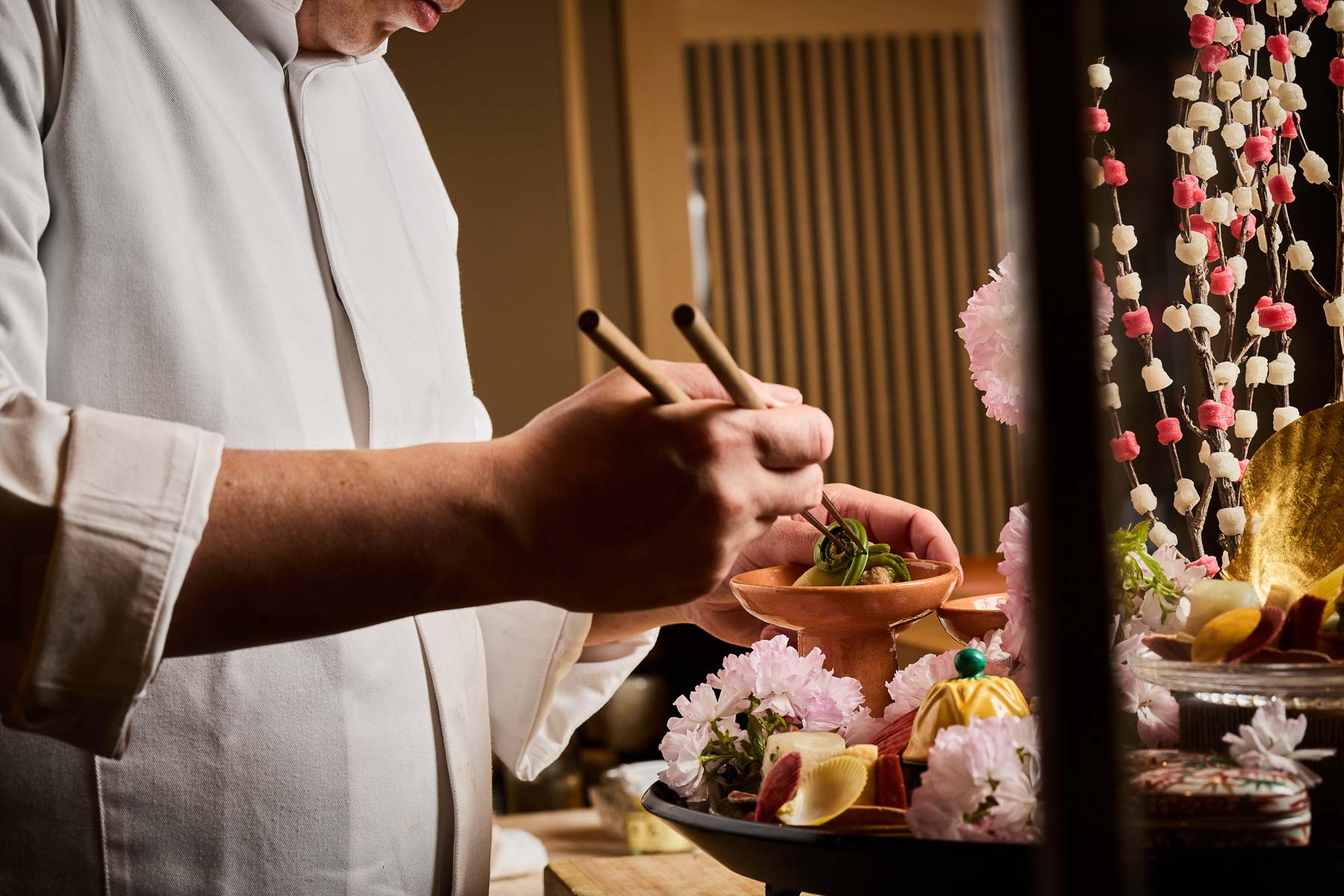
CHEF
Kazuyuki Kitagawa
THE ART OF FRYING
A defining feature of Ginza Kitagawa is its approach to oil-based cooking. The frying is done using solid pots that were crafted in Osaka by skilled artisans. These pots, while weighty and durable, require attentive maintenance to prevent rust.
The frying oil is a proprietary blend of Taihaku and Taiko sesame oils, mirroring the same formula as the tempura restaurant, Naruse, where Kitagawa trained. The result is a cooking medium that is both fragrant and clean, enhancing texture while preserving the flavor of each ingredient—an understated technique that lies at the heart of Kitagawa’s culinary philosophy.
Course
- The price includes our booking fee of ¥8,000
- The price includes our booking fee of ¥8,000


